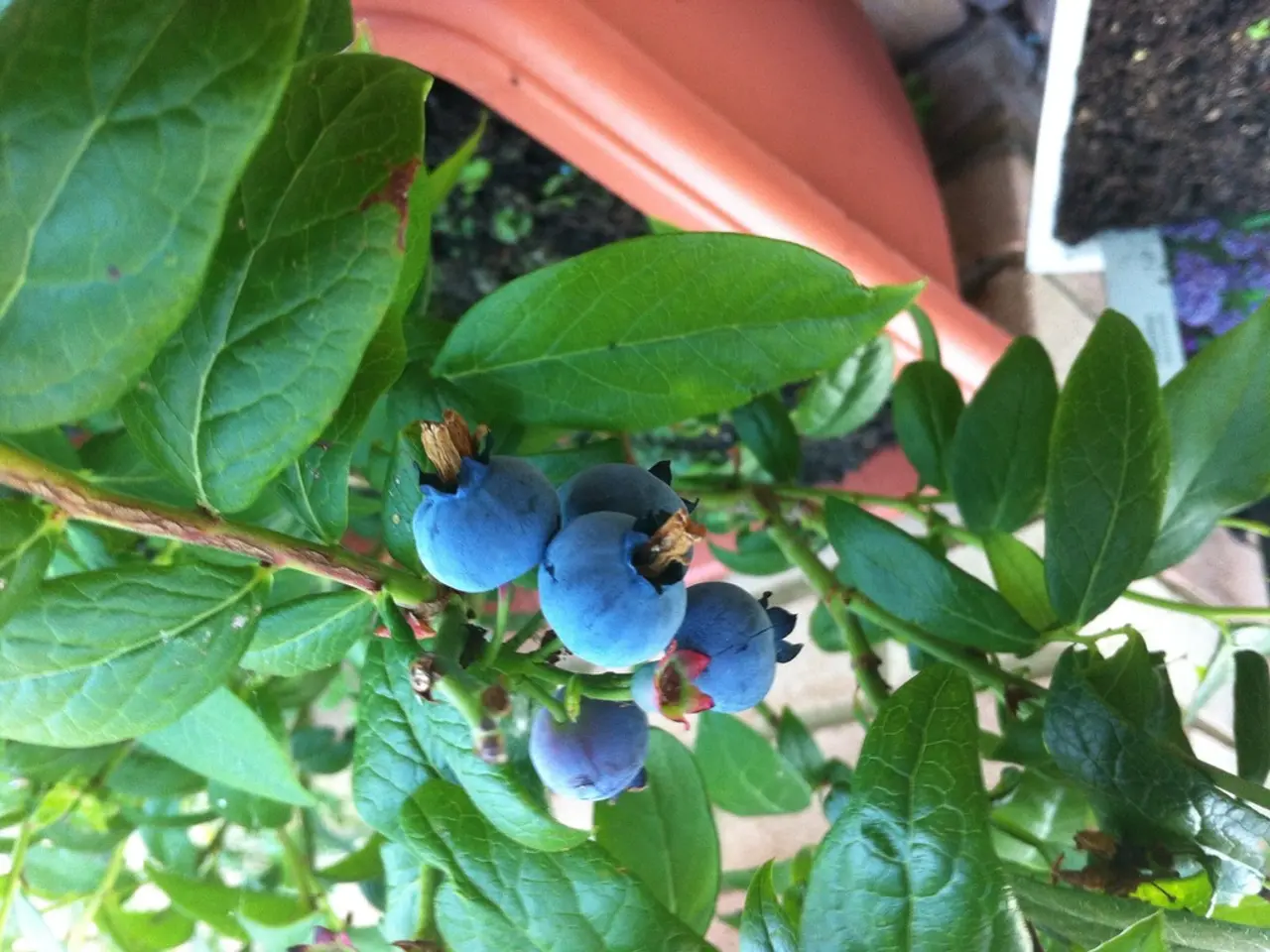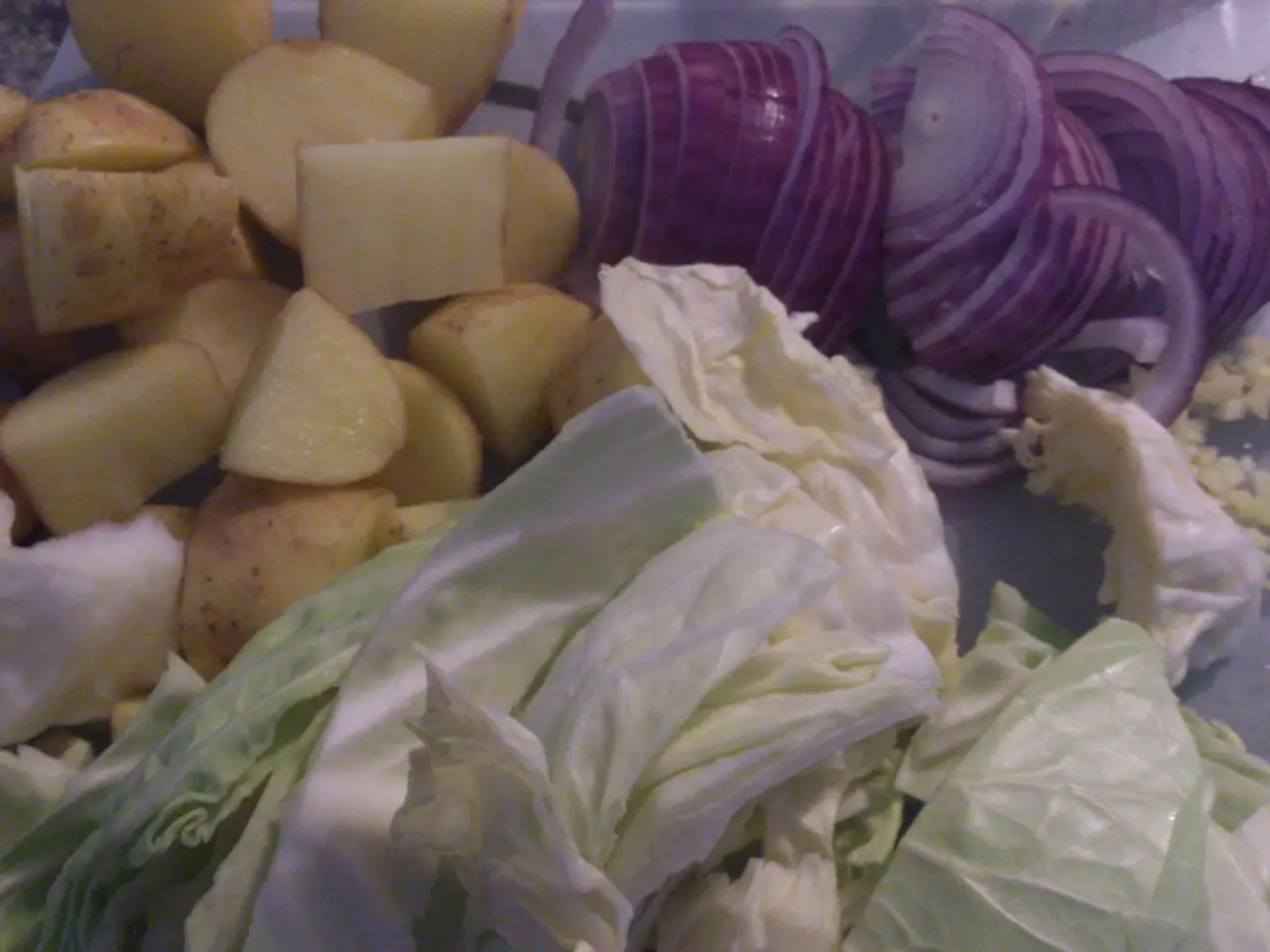Blueberry Tree Disease: Phomopsis Twig Blight Causes Damage
In the world of blueberry cultivation, Phomopsis twig blight poses a significant challenge due to the limited effectiveness of chemical controls and the lack of highly effective fungicides specifically for this disease. However, a strategic approach that emphasises cultural practices has proven to be the most effective method for managing this issue.
Phomopsis twig blight is caused by the fungus Phomopsis vaccinii. During the growing season, infected stems may wilt prematurely, causing their leaves to change colour. Infected buds turn brown and die, forming necrotic, brown lesions on the twig. Later in the growing season, leaf spots may develop, as depicted in Figure 3. These symptoms can be confused with those of Fusicoccum canker.
The fungus survives the winter in dead or infected twigs, and from bud break to bloom, fungal spores ooze from small black structures on previously infected twigs and are spread by rain or overhead irrigation. To limit the spread of the pathogen, it is recommended to avoid overhead irrigation.
Effective control of Phomopsis twig blight primarily involves sanitation, pruning, and good cultural practices. Sanitation includes pruning and removing infected twigs and canes to reduce sources of inoculum, and properly disposing of pruned material away from the field. Proper pruning also plays a crucial role, as maintaining good air circulation in the blueberry canopy by thinning out dense growth reduces humidity favourable to the disease.
Ensuring adequate irrigation and nutrition to keep plants healthy is also important, as stressed plants are more susceptible. Site selection and management are crucial as well, with blueberries best planted in well-drained soils and conditions that avoid prolonged leaf wetness. False and stale seedbeds, although primarily aimed at weed control, reflect the importance of timing and effective tillage to eliminate disease inoculum from the soil surface.
While there is some research on pathogens related to stem blight complex in blueberries, including Phomopsis species, management remains largely reliant on these cultural tactics due to limited fungicide options confirmed for Phomopsis twig blight specifically.
A fruit rot can develop at harvest, causing infected fruit to become very soft and split easily. Harvesting fruit often enough, at least every seven days, can prevent overripe fruit from remaining on the bush and reduce loss from the fruit rot stage. A delayed dormant application of lime sulfur or sulforix after leaf buds begin to break can be effective in reducing early season inoculum.
This fact sheet was originally published in 2011. For the most current spray recommendations, commercial growers are referred to Bulletin 506-B2, Midwest Commercial Small Fruit and Grape Spray Guide, and backyard growers are referred to Bulletin 780, Controlling Diseases and Insects in Home Fruit Plantings. These publications can be obtained from your local OSU Extension office or OSU Extension’s online bookstore at extensionpubs.osu.edu.
The strategic approach in managing Phomopsis twig blight in blueberry cultivation often involves sanitation, pruning, and good cultural practices, including pruning and removing infected twigs to reduce sources of inoculum, maintaining good air circulation in the blueberry canopy, and ensuring adequate irrigation and nutrition to keep plants healthy. Despite some research on pathogens related to stem blight complex in blueberries, the management of Phomopsis twig blight remains largely reliant on these cultural tactics due to the limited number of fungicides specifically for this disease and the need for further scientific research in medical-conditions and health-and-wellness related to pest management.




